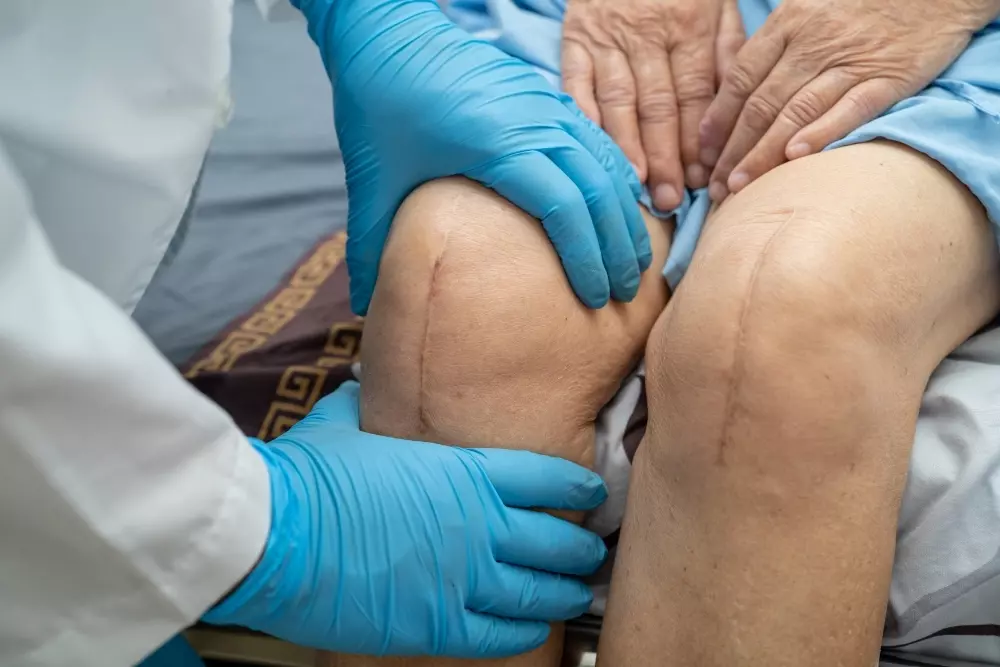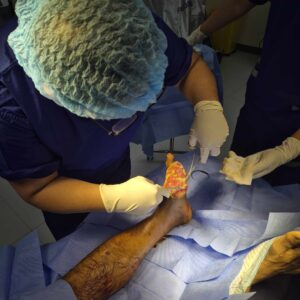Understanding Total Knee Replacement
Total knee replacement is a surgical procedure designed to relieve pain and restore function in severely damaged knee joints. This operation involves removing damaged cartilage and bone from the knee and replacing it with artificial components made of metal, plastic, or ceramic. People often consider total knee replacement when non-surgical treatments such as medication, physical therapy, or lifestyle adjustments no longer provide relief. The primary goal is to reduce chronic pain, improve mobility, and enhance overall quality of life. Conditions that commonly lead to total knee replacement include osteoarthritis, rheumatoid arthritis, and traumatic injuries that damage joint surfaces. Unlike partial knee replacement, which only addresses one part of the knee, total knee replacement addresses all compartments of the knee for a more comprehensive improvement. Modern surgical techniques have significantly improved patient outcomes, making total knee replacement a reliable option for long-term joint health.
Anatomy of the Knee and How It’s Affected
The knee joint is one of the largest and most complex joints in the body, consisting of bones, cartilage, ligaments, and tendons. The main bones include the femur, tibia, and patella, all cushioned by cartilage to allow smooth movement. Ligaments provide stability, while tendons connect muscles to the bones to enable movement. Over time or due to injury, the cartilage can wear down, causing pain, stiffness, and decreased mobility. Arthritis is the leading cause of cartilage deterioration, particularly in older adults. When the joint becomes severely damaged, daily activities such as walking, climbing stairs, or standing can become painful and difficult. Total knee replacement helps restore the joint’s function by replacing damaged surfaces with artificial materials that mimic natural movement.
Who is a Candidate for Total Knee Replacement
Total knee replacement is recommended for individuals experiencing chronic knee pain and limited mobility that affects daily life. Age is an important consideration, as older adults with osteoarthritis often benefit the most, although younger patients with joint damage may also be eligible. Candidates usually have severe knee pain that persists despite non-surgical treatments like medication, injections, or physical therapy. A thorough preoperative evaluation, including imaging tests and health assessments, ensures the patient is fit for surgery. Those with significant knee deformities, loss of cartilage, or damaged ligaments may also be suitable candidates. Weight management and overall health play a crucial role in recovery and implant longevity. Discussing expectations and potential outcomes with a qualified orthopedic surgeon helps patients make informed decisions.
Types of Total Knee Replacement Procedures
There are several approaches to total knee replacement, each offering distinct advantages. Traditional open surgery involves a larger incision to access the knee joint and is well-established with predictable outcomes. Minimally invasive knee replacement uses smaller incisions, which may reduce pain and accelerate recovery, although it is not suitable for every patient. Robotic-assisted surgery offers greater precision by allowing surgeons to plan and execute the operation with computer guidance. Each method aims to improve joint alignment, stability, and function while minimizing complications. The choice of procedure depends on the patient’s anatomy, health status, and the surgeon’s expertise. Modern implants are designed to last for decades, providing durable solutions for long-term mobility. Patients should discuss all options, benefits, and risks with their healthcare provider to determine the best approach.
Preparing for Knee Replacement Surgery
Preparation is key to a smooth recovery after total knee replacement. Strengthening exercises for the leg muscles help support the knee post-surgery and improve mobility. Maintaining a healthy diet and managing weight reduces stress on the new joint. Preoperative assessments may include blood tests, X-rays, and consultations with specialists to address any underlying health issues. Preparing the home for recovery, such as arranging for assistive devices or creating a safe, clutter-free space, ensures a smoother transition. Patients are often advised to stop certain medications and adopt lifestyle adjustments before surgery. Mental preparation, including setting realistic recovery goals, can reduce anxiety and improve overall outcomes. Discussing concerns with the surgical team ensures patients feel informed and confident heading into surgery.
The Total Knee Replacement Procedure Step by Step
During total knee replacement, anesthesia is administered, either general or regional, to ensure patient comfort. The surgeon removes damaged cartilage and bone from the knee joint and shapes the remaining bone to fit the implant. The artificial components are then positioned and secured, restoring alignment and function. Modern implants include metal femoral and tibial components with a plastic spacer for smooth movement. The surgical incision is closed, and the knee is typically bandaged and supported with a brace or dressing. Hospital stays usually range from one to three days, depending on recovery speed and overall health. Pain management, monitoring for complications, and early mobilization are essential during the immediate postoperative period.
Recovery and Rehabilitation
Recovery after total knee replacement is a gradual process that requires dedication and guidance. Physical therapy begins shortly after surgery to improve range of motion, strengthen muscles, and prevent stiffness. Pain management strategies, including medications, ice therapy, and elevation, support comfort during the early stages of recovery. Patients are encouraged to walk with assistance as soon as possible to enhance circulation and promote healing. Daily activities, such as climbing stairs and bending the knee, are gradually reintroduced under professional supervision. Recovery timelines vary, with most patients returning to light activities within six to twelve weeks, and more strenuous activities within six months. Emotional support from family, caregivers, or support groups can improve motivation and overall recovery outcomes.
Risks and Complications
Although total knee replacement is highly successful, it carries potential risks like any surgery. Common complications include infection, blood clots, and implant loosening over time. Pain, swelling, and stiffness are normal during the early stages but should gradually improve. Rare complications may involve nerve damage or allergic reactions to implant materials. Managing risks involves proper postoperative care, adherence to rehabilitation protocols, and monitoring for warning signs. Patients should contact their healthcare provider if they experience severe pain, fever, or unusual swelling. Awareness and proactive management significantly increase the likelihood of a positive surgical outcome.
Long-Term Outcomes and Lifestyle After Total Knee Replacement
Most total knee replacements last 15 to 20 years or more with proper care. Maintaining a healthy weight and following a tailored exercise program prolongs implant longevity and reduces stress on the joint. Returning to low-impact activities like walking, swimming, or cycling is generally encouraged, while high-impact sports may require caution. Patients often experience significant improvements in mobility, independence, and overall quality of life. Regular follow-ups with an orthopedic surgeon help monitor implant performance and detect any potential issues early. Emotional well-being also improves as patients regain confidence in their mobility. Living an active lifestyle, combined with proper care, ensures the benefits of total knee replacement are long-lasting.
Frequently Asked Questions (FAQ)
- How long does a total knee replacement last?
Most implants last 15 to 20 years, with some lasting longer depending on activity level and joint care. - Can I bend my knee normally after surgery?
Yes, most patients regain a functional range of motion, although some limitations may persist. - How painful is knee replacement recovery?
Pain is managed with medications and therapy and typically improves steadily over the first few weeks. - Is minimally invasive knee replacement better than traditional surgery?
It can offer faster recovery and less scarring, but suitability depends on individual conditions and surgeon expertise. - When can I return to work or sports?
Light work can resume in a few weeks, while more strenuous activities may require several months of recovery. - What exercises help strengthen the knee after surgery?
Quadriceps strengthening, leg raises, and gentle range-of-motion exercises under therapist guidance are recommended. - Are there lifestyle changes needed after total knee replacement?
Maintaining a healthy weight, regular low-impact exercise, and avoiding excessive strain on the joint are crucial.
Takeaway
Total knee replacement offers a highly effective solution for those suffering from chronic knee pain or joint damage. With proper preparation, surgery, and rehabilitation, patients can regain mobility, enjoy pain-free daily activities, and improve overall quality of life. Understanding the procedure, recovery process, and long-term care empowers individuals to make informed decisions and maximize the benefits of this transformative surgery.






